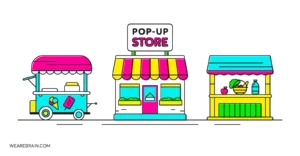Creator Economy: disrupting tomorrow’s workforce

Despite not being a new concept, the Creator Economy is quickly emerging as a target for new revenue streams for global investors and businesses. Approximately $800 million in venture capital has been invested into Creator Economy startups since October 2020, with the market size currently estimated to be around $104.2 billion. YouTube is reportedly expecting to receive $30 billion in ad revenues in 2021.
These figures show that the Creator Economy is no longer seen as a fringe phenomenon but rather a growing force to be reckoned with. Entrepreneurs are looking at this as ‘the next big thing’ and are already finding ways to leverage the market for profit.
What is the Creator Economy?
According to Yuanling Yuan, Vice President of SignalFire, the Creator Economy is ‘a class of businesses built by over 50 million independent content creators, curators, and community builders including social media influencers, bloggers, and videographers, plus the software and finance tools designed to help them with growth and monetisation’.
Gone are the days when entertainment and information were disseminated by a small group of corporations. Thanks to the democratising nature of the Internet, combined with the rapid advancements of consumer technologies, anyone with passion, know-how, and a smartphone can create and release content to a large, captivated audience.
The pandemic has thrust the Creator Economy into the mainstream, powered by the trend of people monetising their passions to make a living. And when the pandemic is finally over, the Creator Economy will remain even stronger because it has opened the door for an entire generation to capitalise on differentiated talents — giving massive implications for entrepreneurship and the job landscape of tomorrow.
What is driving the Creator Economy?
In a paradigm shift from previous years, an overwhelming number of global venture capitalists are focussing on the Creator Economy space as a new market to make money. The reason for this heightened interest is perhaps because the proverbial writing is on the wall for all to see: the shift in GenZ’s career aspirations is going to shape the economy of the future. Roughly 30% of American youth want to become digital creators instead of traditional occupations such as doctors, lawyers, and astronauts, etc. creating a potential generational shift in the global workforce.
GenZ’s want the flexibility to be able to live and work anywhere in the world with full control over their daily agenda. Many of them want to make a living from their passions and see this as a tangible way to limit stress in their lives with the overall goal to be happy. This outlook has been boosted by the world’s adoption of remote working, and with the way the world is technologically advancing, these ‘demands’ don’t seem unattainable.
The Creator Economy is a great example of being in the right time and place. We are living in an age where consumer technology such as smartphones and TVs, tablets, and VR headsets are allowing more democratised digital content creation. Social media platforms like YouTube, Instagram, Facebook, TikTok, and Clubhouse give the average user a platform to upload and share their content immediately to global audiences. In other words, it has never been possible but at the same time never been easier to create digital content.
Better consumable technologies, faster internet, and easier access to content have created an environment where people are spoilt for choice when it comes to the content they consume, and nearly every niche is catered to. Traditional media corporations (television, news, and radio broadcasters, etc.) no longer have the monopoly in a time when anyone can be a creator.
How does the Creator Economy make money?
Thanks to the many social media platforms available, creators can choose from multiple channel options to disseminate their content to a wider audience, increasing their income pool. Any niche content, from music and gaming to fashion and teaching, has a dedicated platform where millions of people can access the content.
No matter the platform they use, creators make money online via the following ways:
- Advertisements: Creators get paid by third-party advertising, such as YouTube adverts and pop up screens
- Subscriptions: Creators deliver exclusive content to fans willing to pay a monthly amount
- One-off sales or donations: Ad-hoc donations give creators another revenue stream from supporters in exchange for a one-off piece of content
- Influencer marketing: Creators/influencers partner with brands and get paid to promote and post reviews of their products.
- Affiliate marketing: Brands give creators links to deals or sales and each purchase attributed to the influencer is paid via commission
- Merchandising: Popular creators with many followers create their own personally branded line of merchandise and products to sell to their fanbase.
Platforms like Patreon and OnlyFans are designed to leverage these types of marketing initiatives, where followers support creators by signing up to pay a monthly fee to get exclusive content or to just support the creator financially so they are able to continue to create content.
Additionally, many of the major platforms are starting to develop ‘creator funds’ in order to grow their lucrative user and creator base. These funds aim to incentivise creators to utilise their platforms instead of competitors’ by paying them revenue gained from engagement and views. YouTube is the latest to announce a $100 million Shorts Fund to rival similar incentivisation programs released by competitors TikTok and Snapchat.
Problems with the current model
While some creators have been propelled to superstardom, like 16-year old TikTok superstar Charli D’Amelio — the first TikTok creator to surpass 100 million followers with an estimated worth of $4 million at age 16 — not all of them will ever achieve these heights. In fact, the vast majority of creators barely make the annual minimum wage for their efforts.
As it currently stands, wealth in the Creator Economy is concentrated at the top: with top creators being hugely successful while long-tail creators struggle financially. According to Harvard Business Review, the Creator Economy needs a ‘middle class’ to save itself from imploding:
“The passion economy is rooted in and celebrates the notion of creator leverage. Because creators emphasise their individuality and offer unique services/products that are non-fungible, creators wield much more power over platforms than gig workers who are entirely replaceable. With the availability of various substitutes and a loyal audience base, creator platforms do have to cater to top creators in order to incentivize them to stay — a dynamic that predisposes platforms toward inequality. The challenge is to balance the leverage that top creators have — and rightly spotlighting top talent — with lifting up newcomers.”
Harvard Business Review
What the creator economy of tomorrow might look like
We may very well see current platforms cater to middle-class creators to help them grow their audiences, as well as the emergence of new platforms dedicated to this creator bracket. This will give middle-class creators the ability to live off the money earned from their content to be able to continue to create and sustain their audience. Thus, we will likely see the emergence of a strong, growing, and supported middle-class creator segment that keeps the entire Creator Economy running as more and more creators emerge.
Businesses looking to leverage the Creator Economy for financial gain will establish strong connections to creators to tap into their audience base.
David Roman
Working Machines
An executive’s guide to AI and Intelligent Automation. Working Machines takes a look at how the renewed vigour for the development of Artificial Intelligence and Intelligent Automation technology has begun to change how businesses operate.







